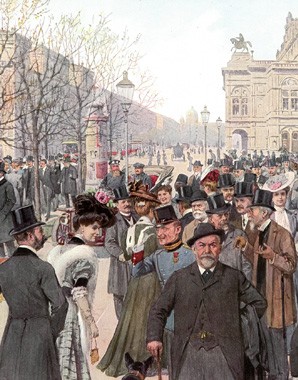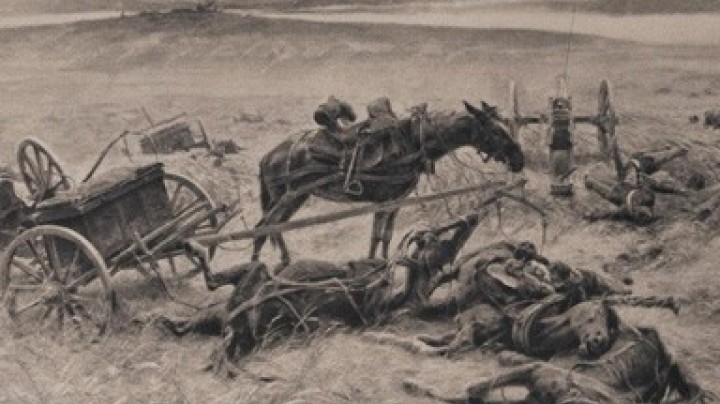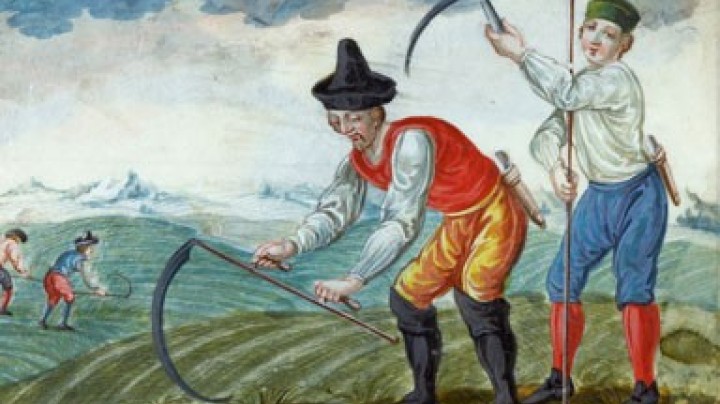The Viennese coffee house
Up until the mid-eighteenth century, coffee houses in Vienna were dingy basement dives frequented mainly by men and had little in common with the refined and light-filled ambience now associated with the ‘traditional’ Viennese coffee house.
The latter type was to reach its apogee with the construction of the Ringstrasse: twenty-seven localities were leased on the Ring, of which today only a handful remain. The coffee house was a place of entertainment, conversation and pleasure, where some patrons spent the whole day, sometimes playing billiards and chess. They were an important meeting-place for artists and those interested in politics, and each group had its own preferred coffee house.
The artists of the Secession, the Court Opera, the Theater an der Wien and other institutions connected with the arts in the vicinity met up at Café Museum, the interior of which had been designed by Adolf Loos. In contrast with the more traditional coffee houses with their plush banquettes, this café with its Thonet furniture was notable for its cool atmosphere and purist interior – and not uncontroversial. The art critic Ludwig Hevesi christened it ‘Café Nihilism’ in reaction to its spartan décor.
Occasionally a separate ‘small salon’ was reserved for the far smaller number of women who participated in coffee house life, such as that at Café Schwarzenberg, the coffee house of the financial world, where business deals were concluded.
The Viennese coffee houses are still famous for their role as meeting-places for littérateurs. The authors of the Jung Wien (Young Vienna) group met regularly at Café Griensteidl from 1880. Women also belonged to this heterogeneous circle of writers, which included Arthur Schnitzler, Hugo von Hofmannsthal, Richard Beer-Hofmann, Peter Altenberg and Felix Salten, as did a number of actors, painters, and even lawyers and psychoanalysts. However, little is known about the latter. These authors were not linked by any common literary programme, but were primarily young Viennese from liberal Jewish families, and are regarded as the founders of modern Viennese literature. In 1897 Palais Herberstein, in which Café Griensteidl occupied the ground floor, was demolished when Michaelerplatz was remodelled. The writers then moved to the nearby Café Central. In his essay Die demolirte Literatur (Literature Demolished) Karl Kraus, himself initially a loose associate of this group of artists, lampooned the Jung Wien group and coffee house writers in general, in particular the ‘coffee house decadence-modernists’ Felix Salten, Hugo von Hofmannsthal and Arthur Schnitzler.





















